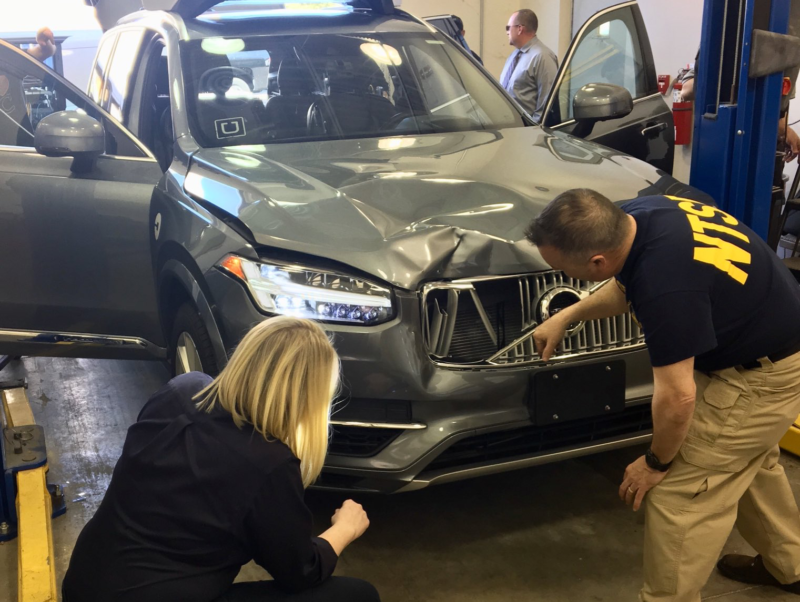
On March 19, the world learned that Uber had a serious safety problem when a prototype self-driving car struck and killed pedestrian Elaine Herzberg in Tempe, Arizona. But signs of Uber's safety problems were evident to company insiders even before the crash. And at least one Uber manager tried to raise the alarm on March 13—just days before Herzberg's death.
Robbie Miller worked for Google's self-driving car program until 2016, when he left for the self-driving truck startup Otto. Otto was snapped up by Uber later that year, and Miller became an operations manager in Uber's self-driving truck program.
Miller quit his job at Uber in March 2018 and went on to lidar startup Luminar. Before he left the company he sent an email to Eric Meyhofer, the leader of Uber's self-driving car project, about safety problems at the company. The email, which was obtained by The Information's Amir Efrati, is absolutely scathing.
There were a lot of warning signs
"A car was damaged nearly every other day in February," Miller said. "We shouldn’t be hitting things every 15,000 miles."
Miller pointed to an incident in November 2017, when an Uber car had a "dangerous behavior" that nearly caused a crash. The driver notified his superiors about the problem, Miller wrote, but the report was ignored. A few days later Miller noticed the report and urged the team to investigate it.
But Miller says his request was ignored—and when he pressed the issue with "several people" responsible for overseeing the program, they "told me incidents like that happen all of the time." Ultimately, Miller said it was two weeks before "anyone qualified to analyze the logs reviewed them."
At the time, Uber's self-driving technology program was split into two different projects. Miller was part of Uber's self-driving truck project, which he described as having relatively good safety procedures. The other projects focused on cars, and Miller argued that its safety procedures were extremely inadequate.
Miller noted that on the Friday before the email (March 9, 2018), an Uber prototype "drove on the sidewalk for several meters."
"At Waymo I would not have been surprised if the entire fleet was immediately grounded for weeks or longer if a vehicle exhibited the same behavior," Miller wrote. Instead, he says, the incident "was essentially ignored" until Miller brought it to the attention of management.
Miller didn't know it yet, but if Uber had grounded its fleet for several weeks in early March, it would have saved Herzberg's life.
Uber should have listened to Miller's reform ideas
Miller suggested several ways to improve Uber's safety record. He argued that Uber should go back to putting two people in every vehicle, allowing a driver to focus on the road, while a passenger can monitor the driving software and log misbehavior.
Miller also suggested that Uber might want to drastically scale back its testing program. "I suspect an 85% reduction in fleet size wouldn’t slow development," he wrote.
Miller also argued that Uber should have a policy of grounding its entire fleet any time an Uber car is involved in a crash. He argued that more people should have access to Uber's incident reporting database, and he argued that everyone in the self-driving car project—including developers and safety drivers—should have the authority to ground the fleet if they see a safety problem.
Of course, after Herzberg's death Uber's fleet was grounded. Uber completely shuttered its Arizona testing program. Uber is now seeking authorization to resume testing in Pittsburgh—albeit on a drastically smaller scale.
According to The New York Times, Uber "plans to run the vehicles on a mile loop between two company offices in Pittsburgh. They won’t operate at night or in wet weather, and they won’t exceed 25mph."
"Right now the entire team is focused on safely and responsibly returning to the road in self-driving mode," Uber said in an emailed statement. "We have every confidence in the work that the team is doing to get us there. Our team remains committed to implementing key safety improvements, and we intend to resume on-the-road self-driving testing only when these improvements have been implemented and we have received authorization from the Pennsylvania Department of Transportation."
reader comments
105